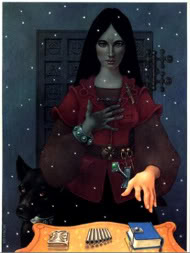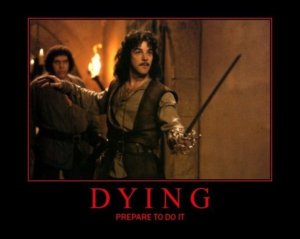I live alone, and my house has two bedrooms. The extra bedroom could have been a guest room, but instead it’s full of bookshelves. An entire bookshelf is filled with nothing but anthologies, and I’ve read every one of them.
They’re easy to enjoy–after all, if a story really is terrible (and I don’t know if my luck is good, my standards are low, or what, but stories I’ve considered irredeemable have been few and far in between), it’s not much of a time commitment to finish, and the next will probably be better. That can make them rather hard to review, too.
Steampunk! is…surprisingly…filled with steampunk stories. I kind of hate to delve into definitions, if for no other reason than that steampunk has gotten notoriously difficult to pin down, but for the uninitiated, steampunk is basically a kind of Victorian retro-futurism. Science fiction by way of the age of steam. There are dozens of blurred edges with other subgenres that often fall under the same heading if for no other reason than that steampunk is just easier to say, but there’s gearpunk and clockpunk and dieselpunk and mannerspunk and gaslamp fantasy and…yeah. Jules Vern and HG Wells are frequently cited as inspirations, along with Shelley and Lewis and others. There’s a lot of crossover with Lovecraft and weird fiction.
I could go on, but I’m here about one anthology, not about an entire culture.
One point very much in this anthology’s favor is its central conceit: it promised an entire collection of steampunk stories in which not a one took place in Victorian England. Since one story took place in London that was, to all appearances, quite Victorian but for the typical technology of the genre, I’m not sure if I misread or was mislead. All of the other stories took place elsewhere, however, and in a variety of times: Victorian Canada, modern and post-apocalyptic America, ancient Rome, and other worlds altogether. Two of them graphic rather than straight written word. Some of them stretched the definition of steampunk so far as to border on unrecognizable, but I think the ability to do just that is both a strength and weakness of the genre.
I didn’t dislike a single one of these stories, and when I looked through the table of contents, I found I could recall details of each, too. That’s very good: it can’t be a sign of a strong story when you forget about it almost as soon as you’ve finished it.
The Summer People by Kelly Link was a standout, set in modern America and one that I felt stretched the definition of steampunk but that has also managed to stick with me and probably will for some time. Steam Girl by Dylan Horrocks, again set in the modern world, is another favorite of mine. Two outcasts in school are drawn together and bond over one’s stories of Steam Girl. I was honestly reminded of what Spaceman Spiff from Calvin and Hobbes might become if Calvin hangs onto his rich fantasies as he grows. The Last Ride of the Glory Girls by Libba Bray was both set in another world and in an Old West that felt familiar, and the story left me breathless. Cory Doctorow’s Clockwork Fagin was a lot of fun and left me with a far better impression of him than his story in Welcome to Bordertown.
I find I can keep going. Those are a few of my favorites, but it was hard to stand out in this collection. If you’re entirely unfamiliar with steampunk, I can’t decide if I’d recommend this or not. I’m inclined to say it’s a perfect collection to introduce someone new to the whole thing, but at the same time, I’d deliberately departing from the earlier roots, so maybe it’s a better second place after some familiarity has been established?
If I step back from questions of genre, the answer is far easier: these are great stories. If you dig science fiction and fantasy, it would be hard to go wrong picking this one up.







